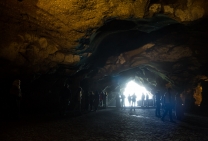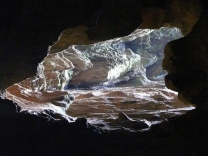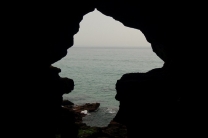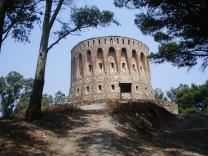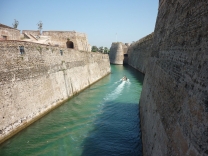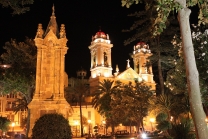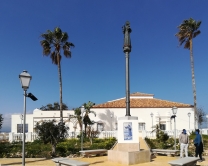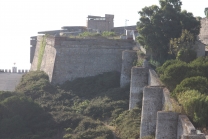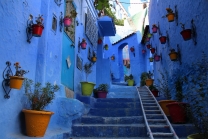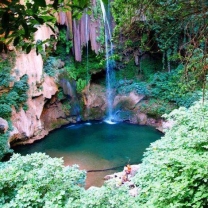No video yet

Caves of Hercules
The Caves of Hercules is an archaeological cave complex located in Cape Spartel, Morocco. Situated 14 kilometres (9 mi) west of Tangier, the popular tourist attraction is adjacent to the summer palace of the King of Morocco.
The cave has two openings, one to sea and one to land. The sea opening is known as "The Map of Africa". It is believed that the Phoenicians created the sea opening which is in the shape of Africa when looked at from the sea. There are also some markings on the wall in the shape of eyes, that are said to be made by the Phoenicians, which make up a map of the local area.
The cave itself is part natural and part man-made. The man-made part was used by Berber people to cut stone wheels from the walls, to make millstones, thus expanding the cave considerably. There are both free and paid entrances. It costs 5 Moroccan dirhams per person to enter the cave and an optional additional 5 for a guide, but other currencies are also accepted.
Legend
The cave was long thought to be bottomless. It was believed that the cave is one end of a subterranean ley tunnel over 24 kilometres (15 mi) long which passes under the Strait of Gibraltar and emerges at St. Michael's Cave in Gibraltar. Legend has it that the Barbary macaques entered the Rock of Gibraltar from Morocco this way.
Mythological tradition also holds that the Roman god Hercules stayed and slept in this cave before doing his 11th labour, (one of the 12 labours which King Eurystheus of Tiryns had given to him) which was to get golden apples from the Hesperides Garden, which some ancient Greek writers said was located nearby at Lixus (one of the cities of Larache) .
According to some Roman sources, while on his way to the garden of the Hesperides, Hercules had to cross the mountain that was once Atlas. Instead of climbing the great mountain, Hercules used his superhuman strength to smash through it. By doing so, he connected the Atlantic Ocean to the Mediterranean Sea and formed the Strait of Gibraltar. One part of the split mountain is Gibraltar and the other is either Monte Hacho in Ceuta or Jebel Musa (known as...

